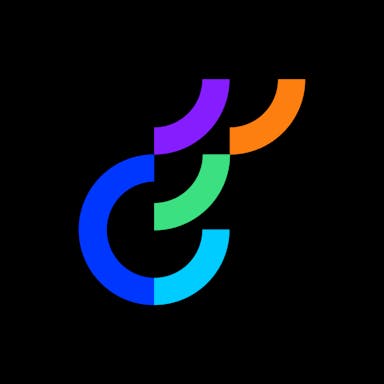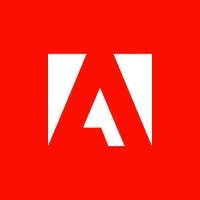Thesis
Consumers have long expressed a desire for personalized experiences. As of 2014, 70% of consumers expected brands to offer personalized shopping experiences and, as of 2019, 90% of consumers expressed that brands could not meet their customer experience expectations, with 80% expecting a more personalized experience. Early personalization attempts by marketers failed to meet customer standards due to a lack of available data, difficulty in tracking customer journeys, and resource and technology constraints.
The landscape of personalization technology has evolved significantly since 2020, driven by advancements in AI and machine learning. These technologies have enabled businesses to deliver increasingly tailored experiences at scale. Personalization now enhances revenue by an average of 10-15%, with companies using tools like Customer Data Platforms (CDPs) and real-time decision engines to create individualized customer journeys. These developments have enabled businesses to scale personalized marketing more effectively.
However, the incoming deprecation of cookies in late 2024 and Apple’s requirement for customers to opt-in to tracking in 2020 is forcing marketers to shift from third-party to first-party data strategies. Without these traditional tools for tracking user behavior, businesses must rely on more sophisticated methods for gathering actionable insights in real time. This transition has increased the urgency for investments in AI-powered tools to help marketers generate faster insights and produce dynamic, personalized content without relying on third-party data. Additionally, searches for “zero-party data” (data that customers willingly provide to brands) have increased by 226% from 2019 to 2024.
AI’s role in marketing has grown as a key solution to the content and data challenges companies face. With the deprecation of legacy data-tracking tools, marketers must deliver personalized experiences more efficiently than ever. AI enables teams to generate and iterate on content rapidly, offering the flexibility to meet consumer expectations while managing the increasing volume of data from first-party sources. Yet, despite its potential, only 13% of marketing leaders currently use AI to deliver personalized user experiences. This gap highlights a significant opportunity for companies that can successfully integrate AI into their personalization efforts.
Optimizely is at the forefront of these shifts. Branded as an “all-in-one operating system for marketing”, its platform includes a suite of AI-powered tools to help teams manage their digital content and optimize digital experiences. It helps businesses improve their customer experiences by allowing them to test variations of their web pages, user interfaces, or content to see what performs best. It further enables businesses to deliver tailored experiences to individual users based on their behavior, preferences, and real-time data.
Founding Story
Optimizely was founded in 2010 by Dan Siroker (former CEO) and Pete Koomen (former CTO). Siroker had previously served as Director of Analytics for the Obama campaign from 2007 to 2009 (directly before founding Optimizely), and Koomen was a former product manager for Google’s App Engine.
Siroker and Koomen's experience was pivotal in shaping Optimizely. Siroker, who had previously worked as a product manager for Google Chrome, played a significant role in the Obama campaign’s early use of A/B testing in 2007, which improved donation conversions by $60 million. This experience highlighted the power of experimentation and, after struggling to implement the website optimization tests, Siroker envisioned a more accessible solution, which became Optimizely. At the time he founded Optimizely, Siroker said,
“We created Optimizely because we wanted to make experiments like this one easier to do. In fact, Optimizely is the product I wish we’d had on the campaign.”
Koomen, with his background at Google’s App Engine, brought in technical expertise and ultimately served as the CTO. Koomen and Siroker met while they both were at Google, where Siroker worked prior to leaving in 2008 to work for the Obama campaign. After Siroker left the Obama campaign, Siroker and Koomen reconnected to start Optimizely.
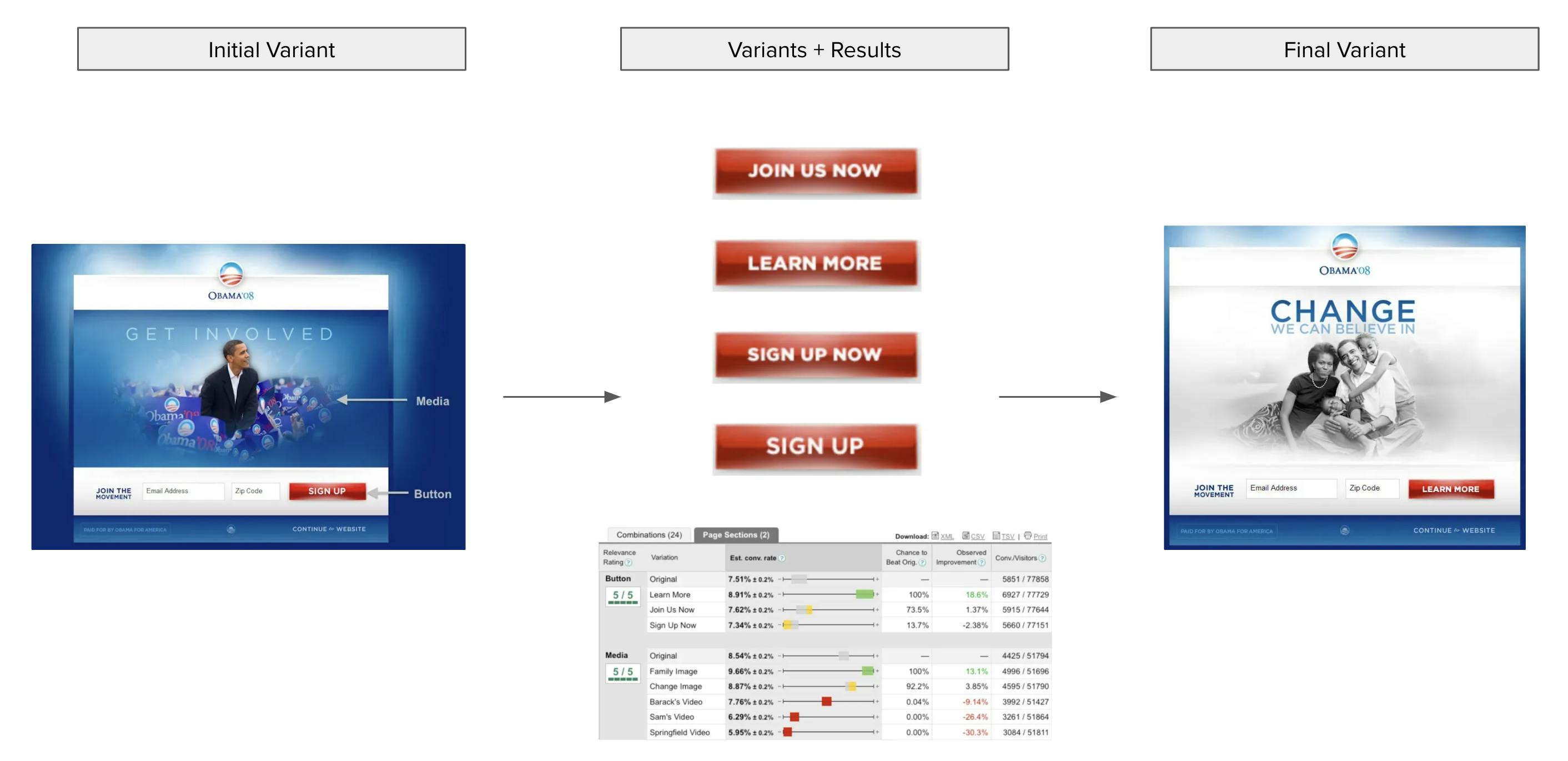
Source: Dan Siroker; Contrary Research
Early in 2010, Optimizely launched a private beta through Y-Combinator. Later in 2010, Optimizely announced a $1.2 million angel round after experiencing immediate traction. At that time, it announced it had landed high-profile clients like the Democratic National Committee (DNC) and the Clinton Bush Haiti Fund, for which Optimizely helped raise an additional $1 million in donations.
Over the years, Optimizely continued to grow, raising over $200 million across multiple funding rounds. In 2020, the company was acquired by Episerver, which rebranded as Optimizely in 2021. The combined entity’s CEO is Alex Atzberger as of 2024, who was previously the CEO of Episerver. Siroker stepped down as CEO in 2017 and eventually left the company in 2020, founding Limitless AI, while Koomen departed in 2021 to join Y-Combinator as a Group Partner.
In August 2024, Optimizely’s CMO was promoted to President about three years after his company, Welcome, was acquired by Optimizely in December 2021. As of January 2025, Atzberger continues to serve as Optimizely’s CEO.
Product
Optimizely’s core product consists of eight distinct product modules. Optimizely also has a platform called Optimizely One, an operating system that unifies each of the company’s product modules in order to “[connect] your entire marketing lifecycle through a single, unified workflow — and accelerate it all with seamlessly-integrated and fully-embedded AI at every phase of the journey.” Optimizely’s AI tool, Opal, is integrated within each product module in order to accelerate creative production, assist personalization and buying through recommendations, and scale experiment velocity.
Content Marketing Platform
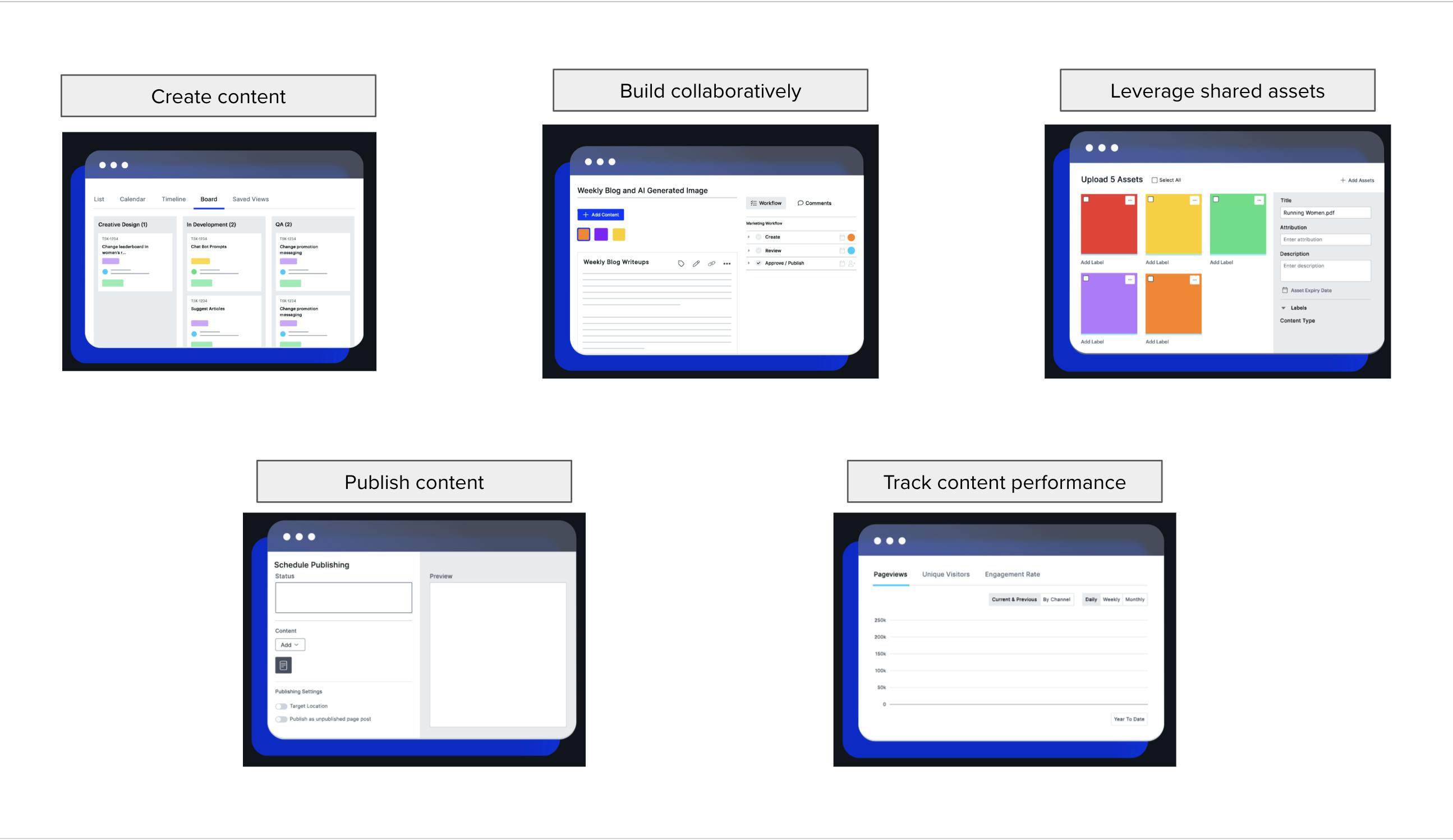
Source: Optimizely; Contrary Research
Optimizely’s Content Marketing Platform (CMP) helps customers manage their entire marketing process. It allows users to plan campaigns, collaborate on content creation, use shared marketing assets, and easily publish and promote content. Additionally, it enables tracking of content performance across multiple channels, providing a centralized solution for the entire content marketing workflow.
Safran, a technology group operating in aviation, defense, and space markets, has used this product to improve productivity across its team. Safran Senior Marketing Coordinator Patrick Bark explains their experience with the product this way:
"Microsoft Teams and SharePoint were sufficient for communication and storage respectively, but we wanted to take it a step further and create a single source of truth. Project management tools like Trello posed security risks. Optimizely's CMP made it a breeze to involve all parties that needed to weigh in on marketing decisions and get executive buy-in because they could see in real-time what was happening in the team, and what would come after.”
In October 2024, Optimizely announced a development in its partnership with Google that would make its CMP product available on the Google Cloud Marketplace.
Content Management System

Source: Optimizely
Optimizely’s Content Management System (CMS) is a website-building tool with a user-friendly visual editor. It includes features like the ability to create tailored content for specific audiences and easily publish content across various devices and apps. This allows users to target different versions of content to different audience segments.
Goodwood Estate, an English sporting venue, has used this product to create more dynamic digital experiences, seeing a 54% increase in site-wide conversion and a 35% increase in total revenue. Goodwood’s Head of Digital Product, Simon Gardiner, explained their experience with the product this way:
“Brand identity is paramount to Goodwood, and our website must do our brand justice. Moving components from Storybook design to the Optimizely CMS efficiently and accurately is a crucial way of achieving this. Optimizely is a great platform for a design-centric business.”
Web Experimentation
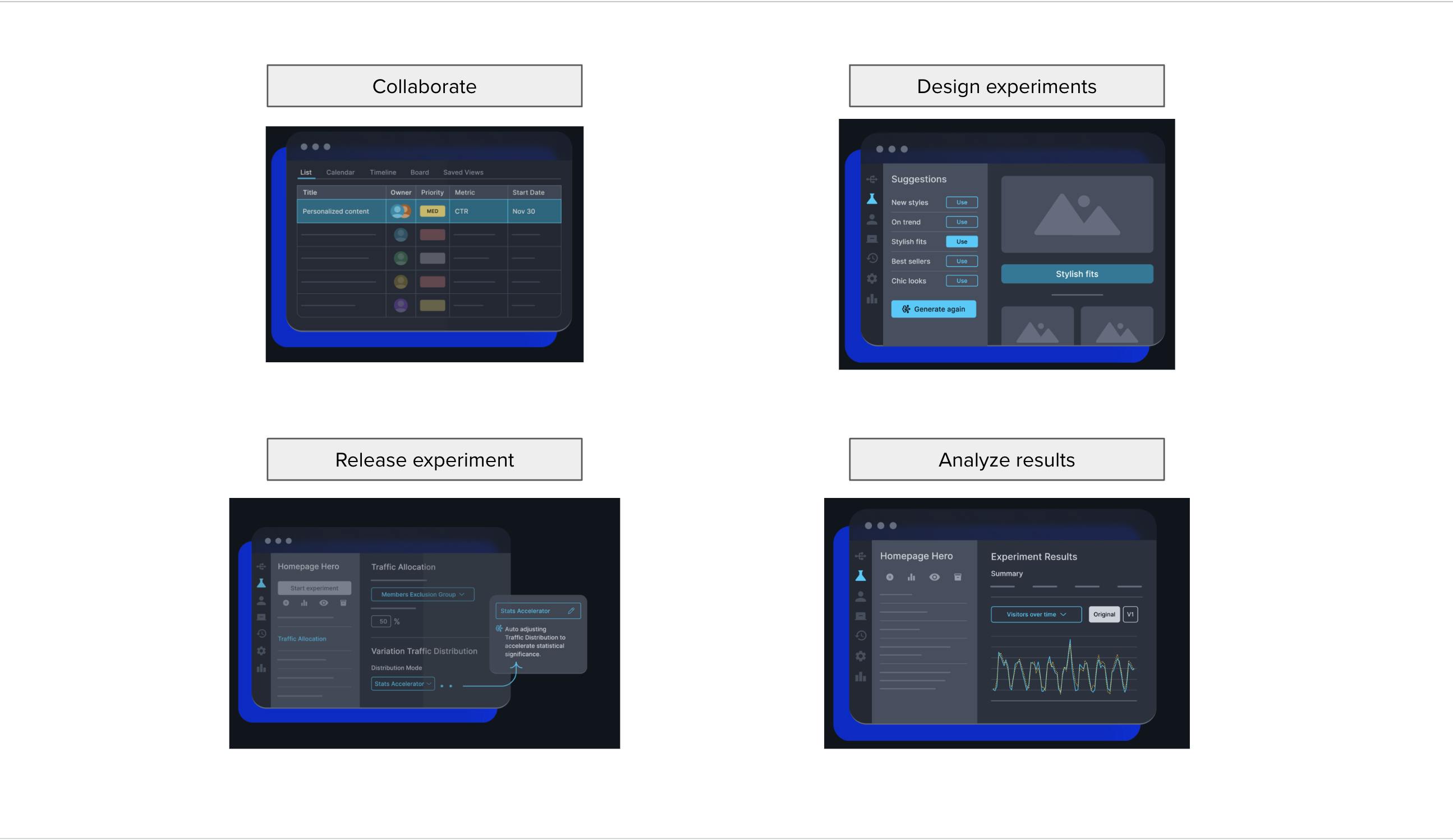
Source: Optimizely; Contrary Research
Optimizely’s Web Experimentation product enables businesses to run A/B and multivariate website tests to optimize user experiences and drive better results. Users can experiment with different website elements, such as layouts, content, and features, to see what resonates best with their audience. The platform offers an analytics suite and real-time data, helping teams make data-driven decisions to improve conversion rates, engagement, and overall site performance.
Feature Experimentation
Optimizely’s Feature Experimentation product is designed specifically for product and engineering teams seeking more control over feature deployments and in-app experimentation. Unlike the Web Experimentation tool, which caters to marketing teams, this product offers a robust feature-flagging solution that allows teams to experiment with and optimize app features before fully rolling them out. It includes tools for collaborating on feature flag definitions, running detailed experiments, and targeting specific user segments. With built-in analytics, teams can track performance and user behavior, making data-driven decisions to refine features and enhance the overall user experience.
Warehouse-Native Analytics

Source: Optimizely
Data privacy is at the center of any conversation about how companies use customer data to make decisions. In the past, a former Optimizely employee noted the possibility for risk to the company, stating that customers “didn’t want [data] to live in an external tool. What they really wanted was for the analysis to live inside their own tools.”
In September 2024, Optimizely acquired NetSpring, a warehouse native analytics platform that would allow Optimizely customers to “tie experimentation and other digital experience activities to business metrics and outcomes that resides in customers' data warehouses.” Optimizely’s analytics product enables data warehouse connections to platforms like Snowflake, Big Query, Amazon Redshift, and Databricks. In addition, users can build custom metrics and create experimentation scorecards based on how certain experiments impact certain metrics the customer cares about.
Personalization
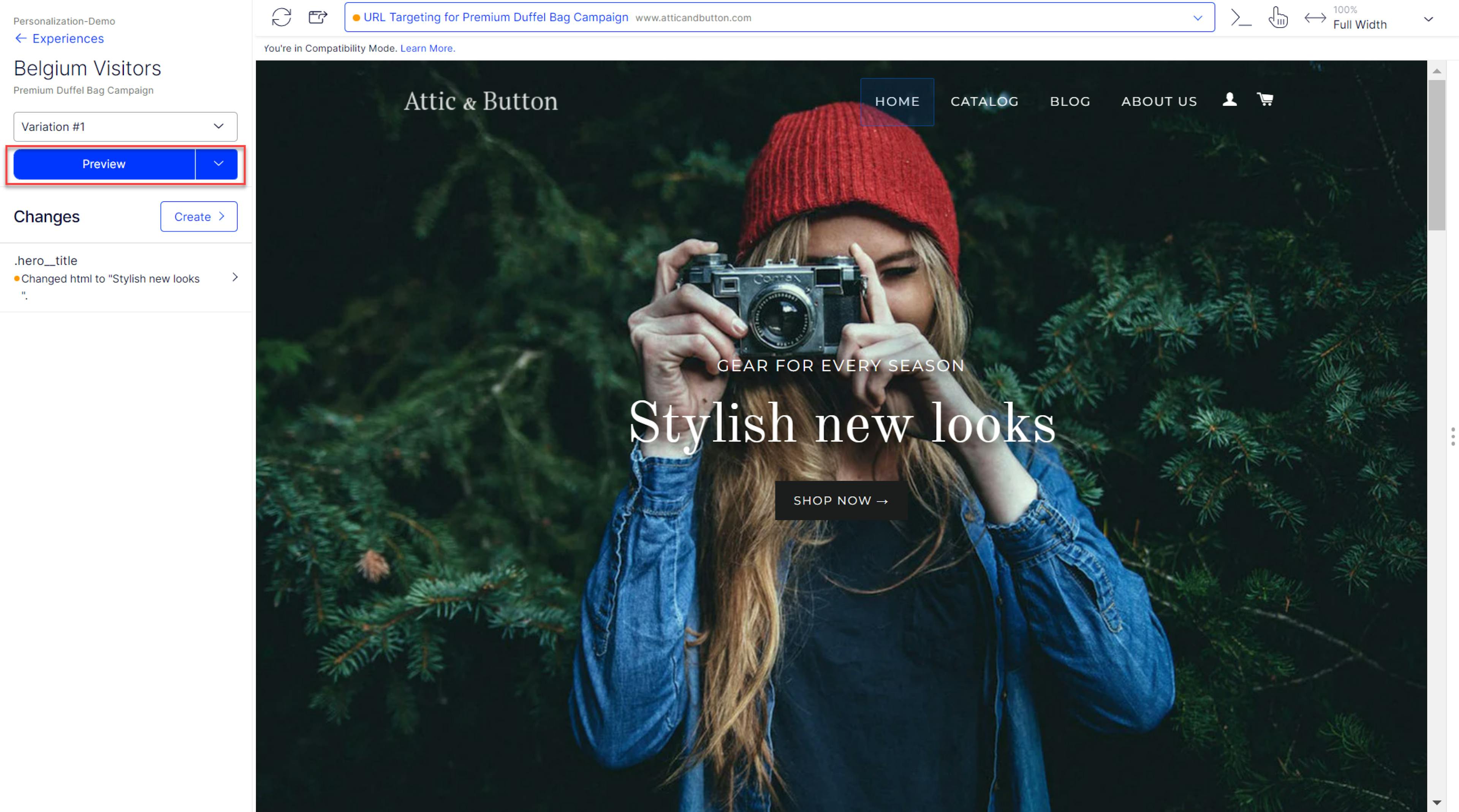
Source: Optimizely
Optimizely’s Personalization product allows businesses to deliver tailored, individualized experiences to their users in real-time. By leveraging data on user behavior, demographics, and preferences, the platform helps teams create personalized content, offers, and recommendations for specific audience segments. With advanced targeting and machine learning capabilities, businesses can optimize engagement, increase conversion rates, and provide more relevant interactions across websites and apps.
Configured Commerce

Source: Optimizely
Optimizely’s Configured Commerce product is designed for businesses to create and manage highly customized B2B e-commerce experiences. It allows companies to tailor product catalogs, pricing, and user interfaces to meet the unique needs of their customers. It contains advanced features like personalized shopping experiences, complex product configurations, and streamlined order management.
Digital Asset Management
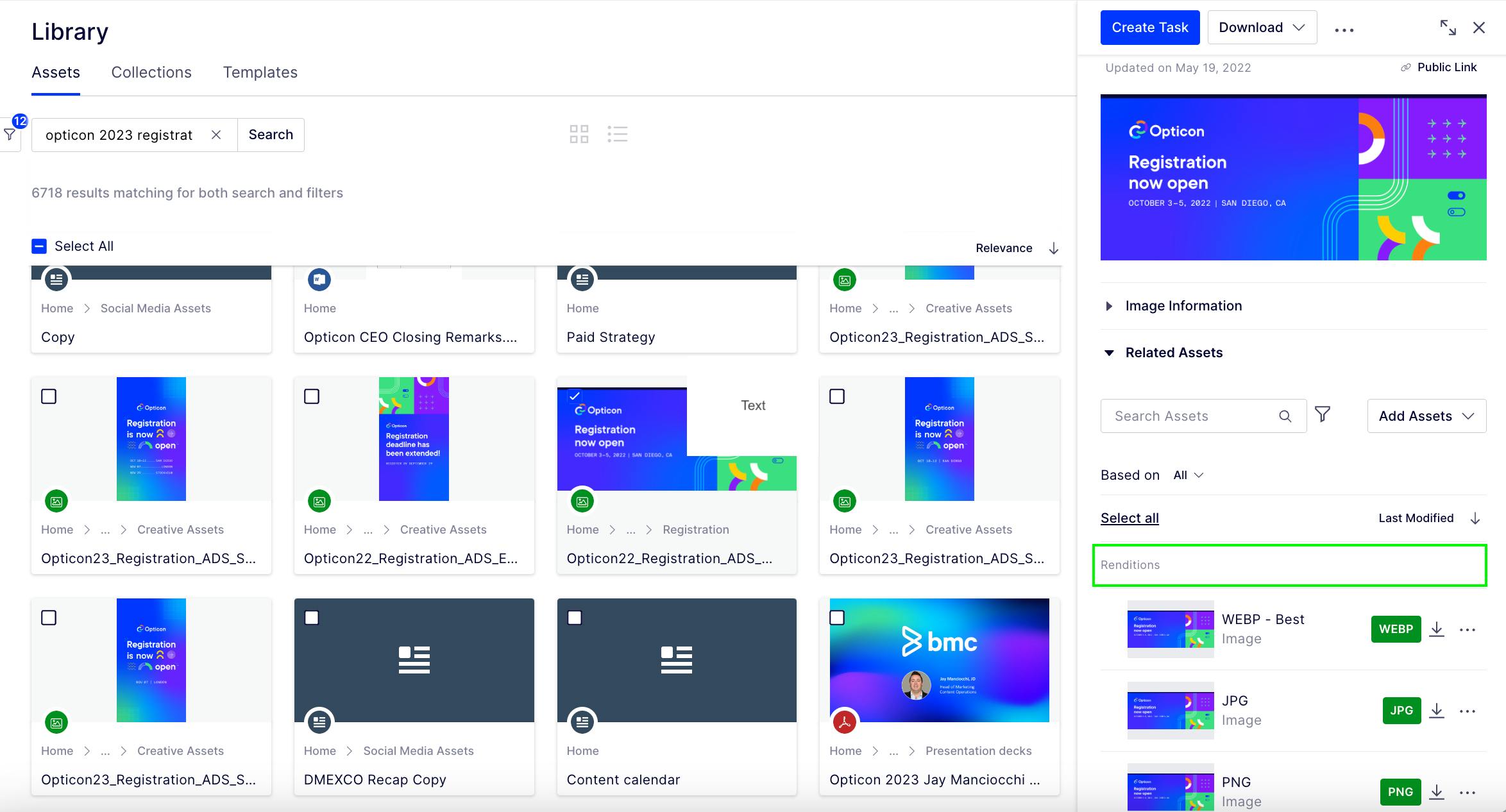
Source: Optimizely
Optimizely’s Digital Asset Management (DAM) product is a centralized platform that helps businesses store, organize, and manage all their digital assets, such as images, videos, and documents. It streamlines the process of accessing and sharing marketing assets across teams, ensuring consistency and brand alignment. With built-in collaboration tools, version control, and powerful search capabilities, the DAM enables efficient asset management, allowing teams to quickly find, edit, and distribute content across different channels while maintaining a unified brand experience.
Data Platform
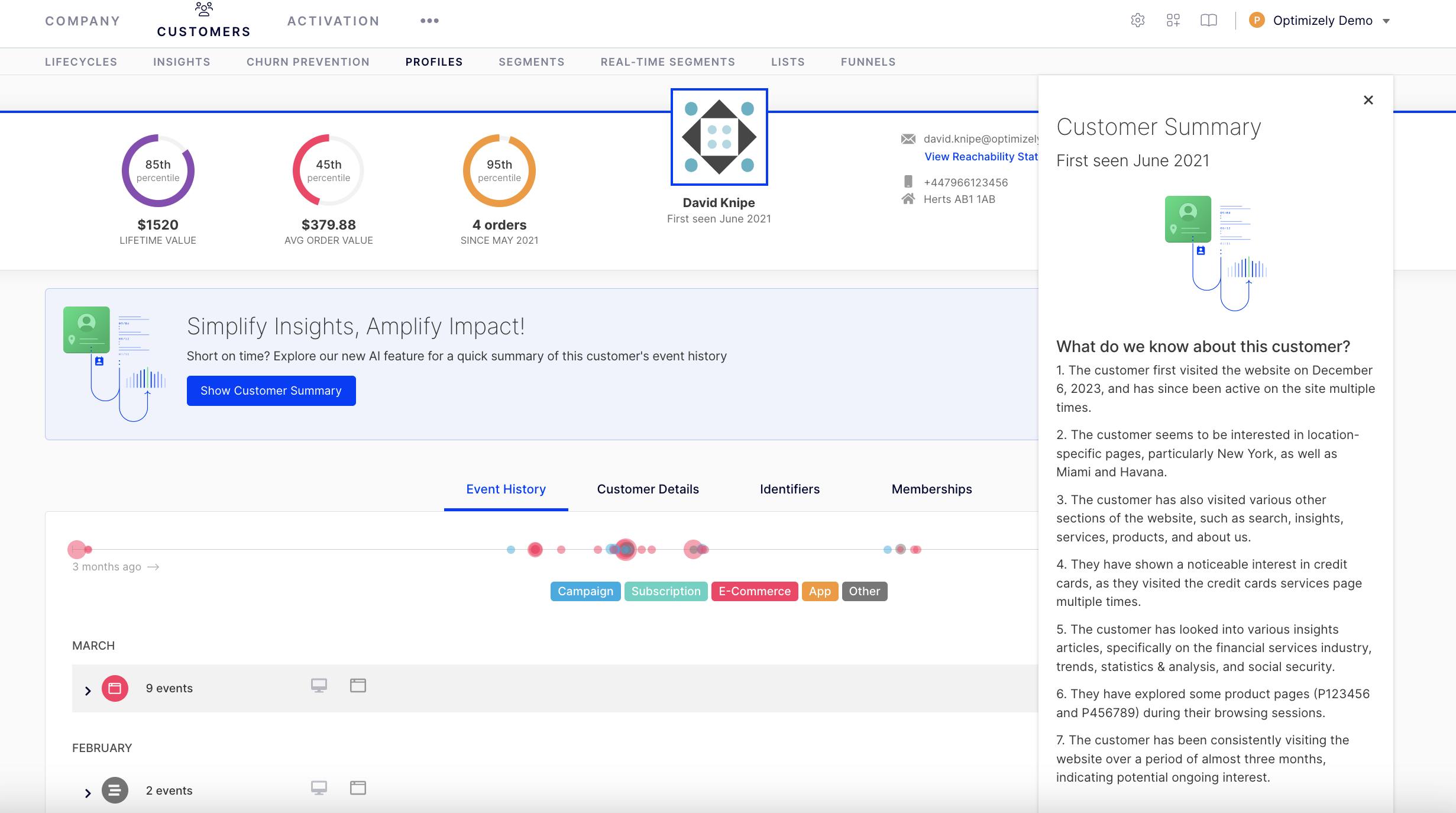
Source: Optimizely
Optimizely’s Data Platform is a comprehensive solution designed to help businesses collect, manage, and analyze customer data from various touchpoints. It consolidates data into a single platform and provides insights into user behavior, preferences, and interactions, enabling teams to make data-driven decisions, optimize marketing strategies, and deliver personalized customer experiences. With advanced analytics and real-time reporting, the platform empowers businesses to understand their audience better and drive more effective, targeted campaigns.
Optimizely One
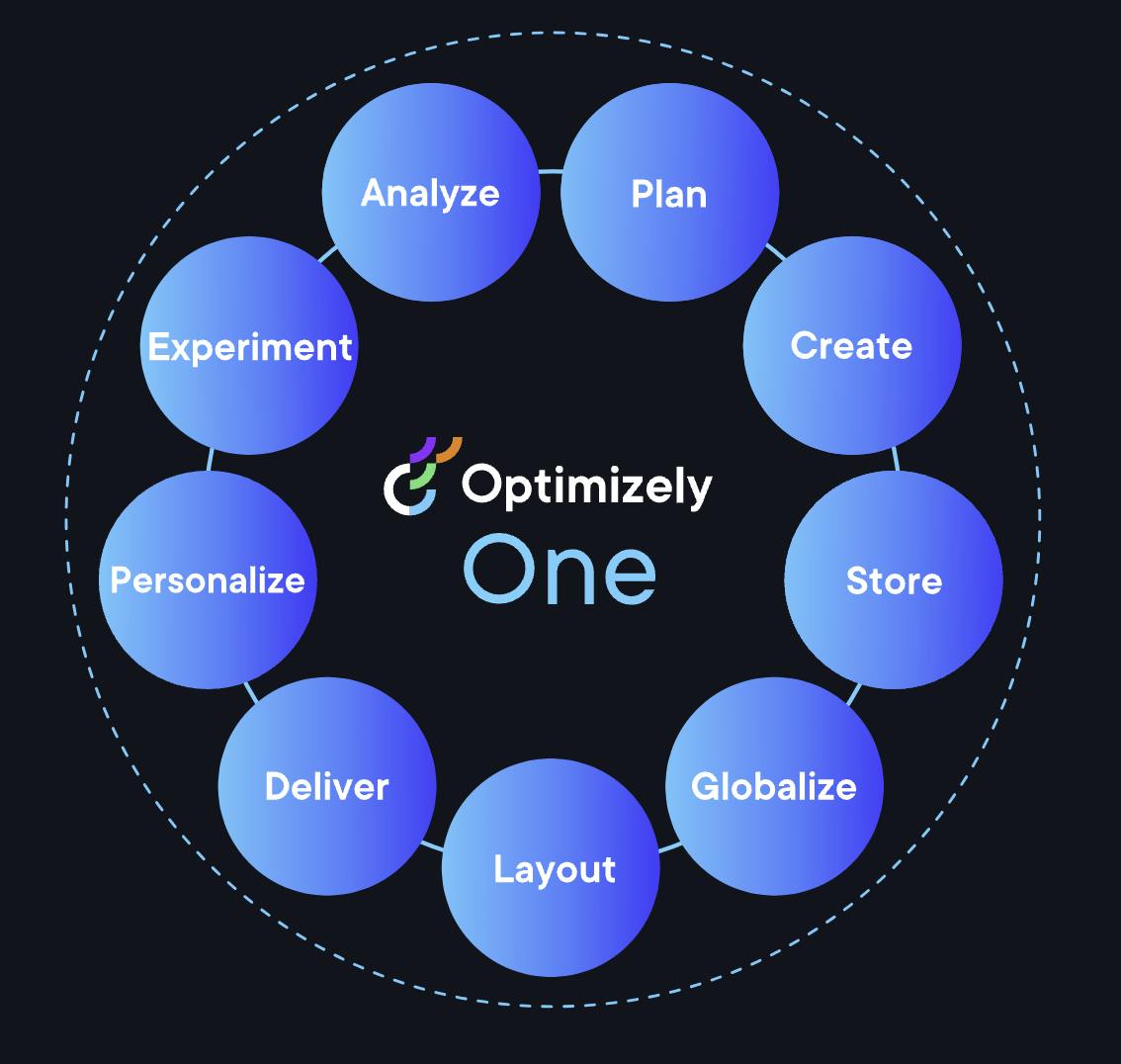
Source: Optimizely
Optimizely One is a unified platform designed to streamline the entire marketing and experimentation process. It connects all of Optimizely’s product modules—such as content management, experimentation, and personalization—into a single operating system. With AI integration at every stage, Optimizely One accelerates workflows, enhances collaboration, and helps teams deliver personalized, data-driven experiences. By unifying these tools, the platform enables businesses to manage and optimize their marketing lifecycle efficiently, from creation to execution and analysis.
In November 2024, Optimizely announced an additional expansion in its partnership with Google to enable Optimizely customers to use Google’s Gemini models. The models are reportedly accessible through Optimizely’s AI assistant, Opal.
Market
Customer
Optimizely started as a self-serve A/B testing tool for small businesses, offering a price point of $17/month in 2011. According to a former Optimizely employee, despite rapid initial growth, the company faced high customer churn, leading it to shift focus from small businesses to larger enterprises. By abandoning the small and medium-sized business (SMB) market, Optimizely transitioned to targeting larger clients with long-term contracts, moving from smaller deals to contracts worth up to $1 million annually. This shift in strategy allowed it to retain more stable, high-value customers, particularly among mid-market businesses and large enterprises.
As of 2024, Optimizely’s core customer base consists of upper-midsized and large enterprises across various industries, including retail, manufacturing, high-tech, healthcare, and financial services. These businesses are typically content-focused and experiment-driven, valuing the flexibility and productivity that Optimizely offers. The platform primarily serves integrated marketing teams, helping businesses streamline their marketing operations through all-in-one solutions. Optimizely encourages clients to move away from disjointed systems, which it refers to as Frankenstacks, and embrace a unified platform that integrates marketing processes and technology seamlessly.
Optimizely has attracted a number of notable enterprise clients, including a quarter of the Fortune 100 as of 2019. Notable customers include Xerox, HP, Zoom, United Airlines, Bloomberg, Shell, Mazda, and Canon. Client testimonials emphasize the impact of experimentation, personalization, and digital transformation on their growth and customer engagement. For example, Atlassian’s CMO highlighted experimentation as a "central part" of its growth strategy, while Mazda's digital engagement leader praised Optimizely for enabling a seamless transition to a data-driven platform, stating, "If I was being asked to recommend Optimizely, I wouldn't have a hesitation. The technology backing the project was flawless."
Market Size
Optimizely operates within the digital experience platform (DXP) market, which is composed of tools that enable organizations to understand their customers' needs and deliver tailored content across various channels. This market is projected to grow from $12 billion in 2023 to $24.4 billion by 2029, with a compound annual growth rate (CAGR) of 11.9%. A major driver of this growth is the integration of AI and machine learning, which allows companies to dynamically personalize content and continuously improve their digital experiences based on real-time data.
Personalization is becoming increasingly critical as businesses look to optimize marketing spend and create targeted ads that stand out amidst the roughly 350 ads people see per day. The personalization industry is expected to grow at a CAGR of 20.4%, reaching $31.6 billion by 2030. Similarly, experimentation and testing are poised for significant growth, with a projected CAGR of 14.0%, reaching $11.4 billion by 2030. These trends underscore the importance of both personalization and testing in driving growth within the DXP market, areas where Optimizely is heavily investing.
Competition
Adobe: Adobe, founded in 1982 with a market cap of $189.9 billion as of January 2025, competes with Optimizely through its Adobe Experience Cloud. Adobe offers tools for creative and marketing needs, including robust content creation capabilities through Adobe Creative Cloud and AI-powered content management via Adobe GenStudio. While Adobe is known for content creation and management, Optimizely is known for its testing-first approach, offering a reportedly more intuitive and faster experimentation process. Adobe's ecosystem can sometimes feel cumbersome, slowing experimentation velocity — a critical factor in driving value from testing. Moreover, Adobe's tools, while well-integrated within its own ecosystem, may be less flexible when it comes to integrating with third-party systems.
Sitecore: Sitecore, founded in 1998, began as a website development tool before evolving into a CMS and, more recently, expanding into digital asset management, AI-powered recommendations, and personalization. Compared to Optimizely, Sitecore's experimentation capabilities are reportedly more limited, especially in areas like AI-driven personalization and multi-page funnel testing. Optimizely's feature experimentation reportedly enables broader control over feature rollouts across various platforms, while Sitecore's tools remain focused on web experimentation. Optimizely’s personalization success is highlighted in the case of Steadfast, which achieved a 286.6% increase in click-through rates after migrating to Optimizely from Sitecore. As of 2016, Sitecore was valued at $1.2 billion after investor EQT bought a majority stake in the company.
Acquia: Acquia, founded in 2007, began as a company supporting Drupal, an open-source CMS, and has since expanded into customer data integration and website optimization. Valued at $1 billion following its acquisition by Vista Equity Partners in 2019, Acquia's open-source foundation provides enterprises with the flexibility to adapt and extend their digital infrastructure. However, Acquia is relatively new to the experimentation market, launching Acquia Convert in July 2024.
Business Model
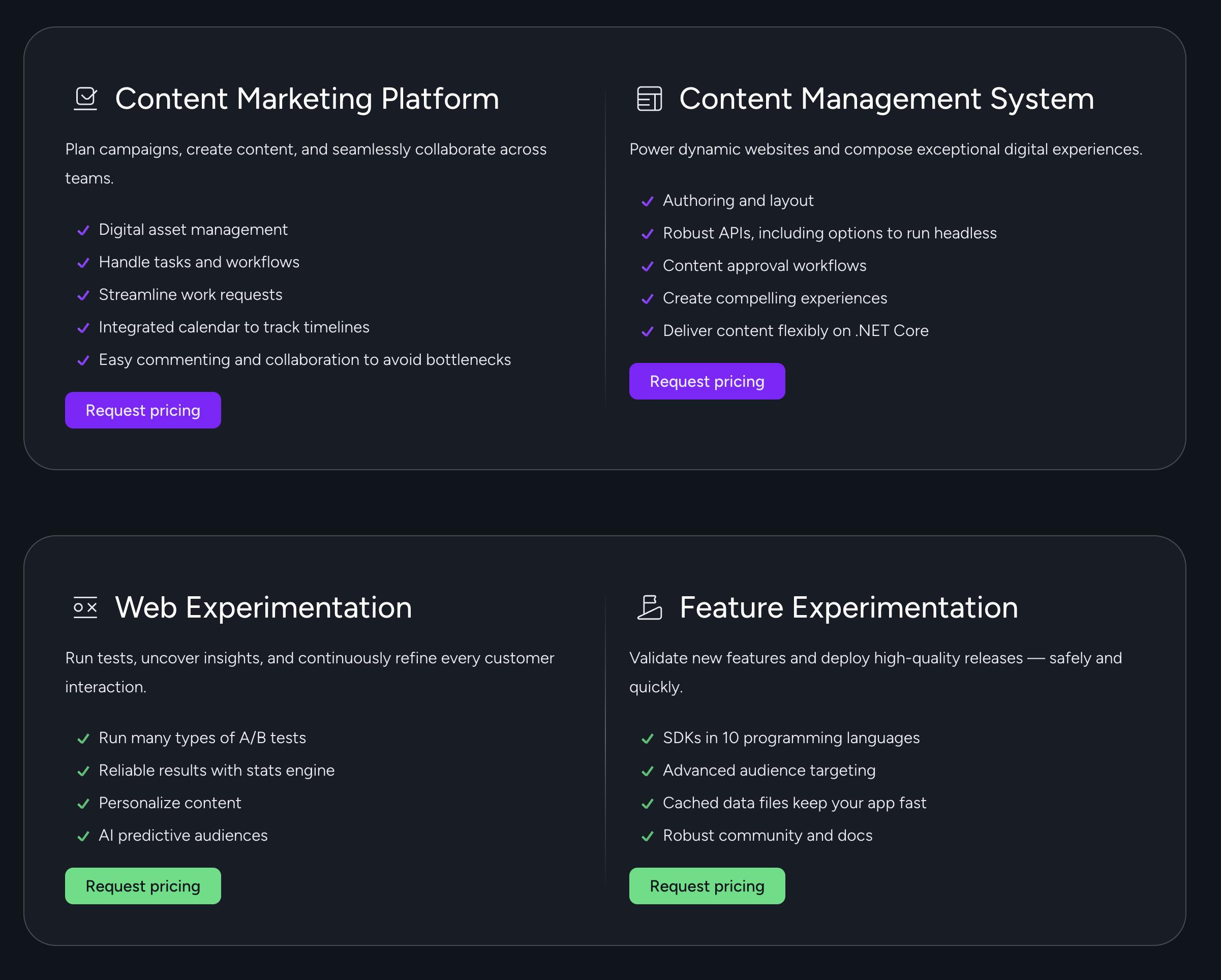
Source: Optimizely
Optimizely offers plans for each of its eight product modules and access to the Optimizely One platform. Optimizely doesn’t publish any specific pricing details. Packages are customized based on the specific needs of each company, with Optimizely focused on creating value for larger enterprises with varying levels of digital experience demands. This enterprise-focused approach allows them to cater to clients with diverse requirements, making their solutions scalable and adaptable across industries.
While pricing details aren’t published, one source indicates that plans start at a minimum of $36K annually, with costs increasing based on factors like usage, traffic levels, and additional features. Additionally, another source indicates that Optimizely X Business plans are priced at around $64K per 10 million impressions, while Enterprise plans can reach $113K per 10 million impressions. Given these pricing structures and the fact that all contracts are annual, the total cost for clients can easily exceed $200K per year, particularly for high-traffic organizations or those requiring more extensive feature sets.
Traction
Optimizely has demonstrated significant traction since its early years. In 2012, the company grew revenue by 1,266% YoY, fueled by a rapidly expanding enterprise customer base that included major names like Starbucks, Disney, and Salesforce. By the end of 2012, Optimizely announced it had completed over 100K tests, delivered treatments to 1.3 billion visitors, and was being used by nearly 2% of the Alexa Top 10K websites. The company’s client base had grown to over 2.8K companies, including prominent media brands such as New York Magazine and The New Republic.
This momentum continued into 2013, when Optimizely completed a $28 million Series A round, reporting 500% annual revenue growth and achieving market leadership in website optimization platforms. This funding was channeled into international expansion, sales, and product development, marking a significant step toward broadening their offerings beyond testing into personalization and segmentation.
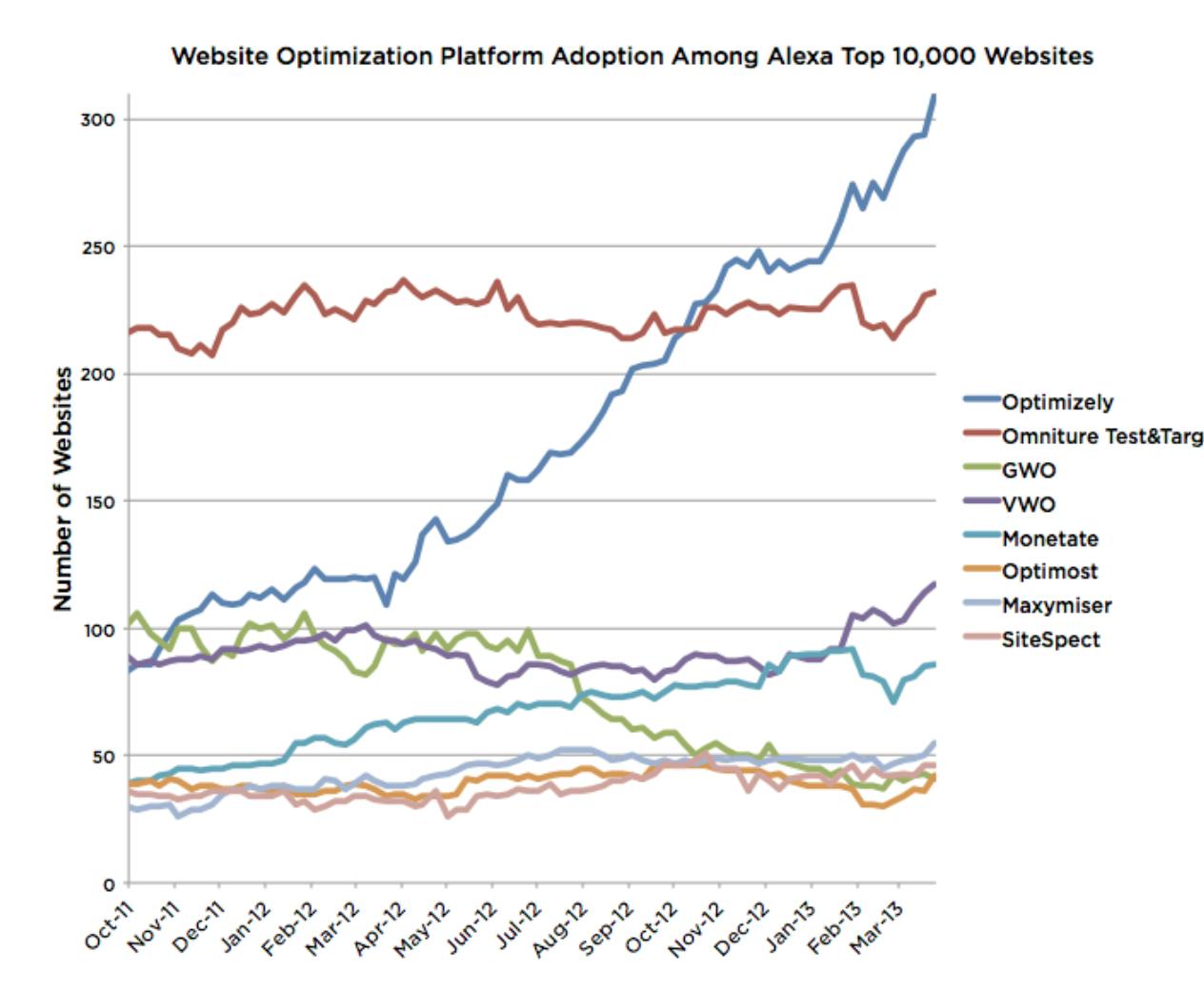
Source: TechCrunch
Optimizely's expansion continued into 2014 with the launch of its mobile product, Optimizely for iOS, followed by a $57 million Series B round led by Andreessen Horowitz. By this time, Optimizely had grown to over 7K customers and 500 million experiments conducted across 101 countries. Later in 2014, Optimizely announced the acquisition of Synference, a machine learning startup, to expand Optimizely’s optimization platform.
In 2015, Optimizely raised a $58 million Series C led by Index Ventures, announcing that their revenue growth had more than doubled since they previously raised their Series B, powered by the launch of Optimizely Personalization, its initial personalization product.
In March 2016, Optimizely announced a layoff of 10% of its staff amidst a sector-wide drop in valuations. Later in 2016, Optimizely launched Optimizely X, expanding the platform’s capabilities to include developer-focused experimentation tools.
In 2017, Siroker announced he was stepping down as CEO, handing the reigns over to Jay Larson who had previously served as the CEO of Birst. At this time, Optimizely had reached over $90 million in ARR, scaled to over 400 employees, and seen Optimizely X become “the fastest growing experimentation platform in the world”. Siroker would stay involved as Executive Chairman but wrote that he wanted the CEO of Optimizely to be someone with more experience building large enterprise software companies.
Early in 2020, Optimizely announced a layoff of 15% of its staff, citing concerns due to COVID-19. By 2024, Optimizely announced it had crossed $400 million in ARR after experiencing four consecutive quarters of double-digit growth, aided by the launch of Optimizely One in late 2023. Multi-product ARR accounted for over half of its revenue, showcasing its successful expansion into a comprehensive digital experience platform.
Valuation
In 2019, Optimizely announced a $105 million round of funding, with $50 million coming in the form of a Series D led by Goldman Sachs Private Capital and the other $55 million coming as a line of credit from Bridge Bank. By this point, Optimizely had secured over $200 million in funding. In December 2024, Optimizely went through a $1.1 billion debt restructuring led by Golub Capital.
Optimizely was acquired in 2020 by Insight Partners for an undisclosed sum and merged with another Insight Partners portfolio company, Episerver. Optimizely’s estimated valuation post-acquisition by Episerver was around $600 million, though as of January 2025, there have been no public updates on its valuation since. Episerver, founded in 1994 in Sweden, originally began as an email solutions provider but evolved into a comprehensive content management system (CMS) and digital experience platform (DXP). In 2007, Amadeus Capital Partners acquired a majority stake in Episerver for $23.5 million, which was then sold in 2010 to IK Investment Partners.
Episerver expanded aggressively through a series of acquisitions to enhance its platform, notably merging with Ektron in 2015 to launch the Episerver Digital Experience Cloud. After acquiring additional personalization and automation companies, Episerver was sold to Insight Venture Partners for $1.2 billion in 2018. In 2019, Alexander Atzberger, the former President of Customer Experience at SAP, became CEO of Episerver, which rebranded to Optimizely after the acquisition.
Key Opportunities
Integrating AI
Optimizely is strategically positioned as part of the AI revolution in marketing technology, with AI integrated across all its products. This integration allows for continuous refinement of its models as it gains more customer data, providing a competitive edge as AI becomes central to marketing strategies. The growing volume of customer data necessitates quicker time-to-insight to enable teams to respond more effectively to customer needs. 70% of marketers lack data-driven recommendations, highlighting the significant opportunity for Optimizely to enhance decision-making processes through AI.
Additionally, as pressures to personalize content increase, AI will be essential for teams to generate and iterate on material. Recent surveys reveal that 36% of marketers have already incorporated AI into their workflows, while 51% are piloting or scaling AI initiatives. With 88% of marketers believing that enhancing AI utilization is vital for staying competitive, Optimizely is well-positioned to support organizations in their quest for personalized, data-driven marketing solutions.
Empowering Teams with Fewer Resources
As integrated marketing teams become the standard, Optimizely’s feature stack offers a compelling solution for marketers aiming to lessen their reliance on engineering resources. By minimizing the need to learn multiple platforms, Optimizely simplifies operations for teams with limited capabilities. As of 2022, 60% of B2B marketers felt their marketing tech stacks were overly complex, with 33% citing the manual effort required to integrate tools as their primary challenge.
Dynamic Content Personalization
Optimizely’s suite of products is ideally suited to help businesses optimize and personalize content for each site visitor, a crucial priority for many organizations. The company’s real-time segmentation and personalization capabilities allow it to synchronize and leverage customer data instantly, while competitors typically take one hour to one day to achieve the same. This efficiency makes Optimizely’s personalization product more effective. This is vital for competitiveness: 71% of consumers expect personalized interactions, and 76% become frustrated without them.
Key Risks
Heavy Investment in a Bundled Product
Optimizely is heavily investing in the market for an all-in-one solution. As ease of integration between different platforms improves, teams may prefer best-in-class products for each vertical, using integration marketplaces to create solutions that rival or surpass the Optimizely bundle.
There are challenges with DXPs in general. They can be hard to customize, feature user interfaces that may not suit specific use cases, and require significant maintenance. Additionally, DXPs, like many monolithic tools, often "overpromise and underdeliver," lacking best-in-class features across various areas.
In Optimizely's case, a former employee noted that the company faced challenges due to its lack of a leading experimentation product. They emphasized that while Optimizely initially gained value from its statistical expertise in A/B testing, it struggled to maintain that quality over time, impacting its growth potential.
Increased Competition
Data and analytics companies like Rudderstack, Segment, and Snowflake are developing personalization and experimentation tools that integrate easily into existing tech stacks. Their extensive integration capabilities allow teams to avoid fully adopting new platforms. Former Optimizely customers have cited integration difficulties as a reason for switching away:
“There were no new integrations to make it easier for a company like us to funnel our existing analytics platform events into Optimizely nor was there any off-the-shelf way to funnel results from Optimizely out onto an analytics platform or a big data platform like Snowflake or BigQuery or Redshift.”
Forced to implement custom connectors to get the most out of Optimizely, the customer opted to research other experimentation platforms. Another customer echoed this sentiment, explaining that they struggled to obtain necessary analytics, often requiring custom queries from data teams for insights.
Summary
The digital experience market is undergoing rapid transformation, driven by heightened demands to harness first-party data and advancements in AI that enable the delivery of highly personalized consumer experiences. Optimizely, with its marketer-first product already incorporating AI across various modules, has demonstrated its unique position to seize emerging opportunities in the market.
However, to sustain its momentum, Optimizely must ensure its bundled product remains competitive against niche best-in-class solutions. Additionally, it must carefully navigate the challenges posed by intensifying competition from both industry players and specialized data and analytics firms as well as growing data privacy concerns amid evolving regulations.
